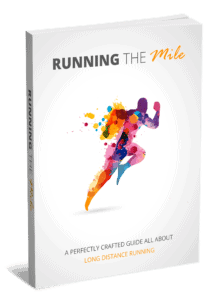
How to Start Running at 50 Plus
Page Contents
Running is more than just a terrific way to lose excess weight and many people wonder how to start running at 50 plus. Getting in shape can be an exceptionally fun way to exercise, but knowing how to get started when your 40 or even 50, is a question many people have.
To start running at 50 plus, establish a routine. Make a running training plan; nothing strenuous, intimidating, or overly strict, just a reasonable goal to jog or run several times every week.
Running At 50 Plus – Starting Running Later In Life
Just because your trying to start running at 50 plus years of age, doesn’t mean you should think any differently from the younger generation. You can even start running at 60 if you follow some simple tips.
Begin slowly and build up over time. This is important when starting running at 50 plus. Whether a beginning goal is to run a certain number of times a week or a certain distance every week, make sure it is a reasonable, achievable goal. The best way to get results from running is to do it consistently over a long period – and that means building up endurance.
Stick to the schedule, but allow some flexibility. It is very difficult to stick to an excessively rigid workout. Maintain a structure, but change it so that it fits into an average day.
Find what works. Everyone likes to run a bit differently. Some run with friends outdoors on dirt trails; others run inside to music on a treadmill. Try varying workouts to keep them interesting and engaging.
How To Become A Runner When You Hate Running
Running can be difficult when starting, and it takes time to become a runner when you hate running from the beginning. One of the most common reasons people do not stick to running is because they try to do too much in a single workout or before they have built up to it. Running should involve challenges, but not to the point of exhaustion. Again, remember that running consistently is a building process. While it is important to vary pace and distance, care should be taken not to do too much in a single run.
Staying engaged in running can be difficult, but it doesn’t have to be. Here is some general advice to make the miles more enjoyable:
– Put together a running music mix with fast and slow tempo songs on either a computer (for treadmill runners) or a portable music player and update it regularly.
– If running outside, try different routes. Run-on dirt trails and roads. This also provides options for running different distances.
– Vary speed between a moderate jog and a full-on sprint. This is particularly effective when running with music. Run to match the intensity of a song.
– Vary runs as much as possible. Run at different times of the day and different temperatures.
– Running in rain or other inclement weather conditions while wearing proper clothing can be an exciting variation.
– Comfortable shoes are designed for runners. Cheaper, less comfortable shoes only put additional stress on feet and ankles and discourage running.
– Durable running socks that protect and support pressure points on feet.
– Dress in light non-cotton layers. Polyester shirts are more comfortable and lighter when wet and moderate temperatures better.
Running After 50 – Tips and Tricks
Drink plenty of water. Sports drinks will work too, but water is the purest and best thing to drink before and after a run.
Stretch before and after a run. Before running stretch dynamically (fast stretches without holding the most extended positions such as arm circles, high kicks, and lunges). Dynamic stretches loosen muscles and prepare them for movement. Use static stretches (holding stretch for 20-30 seconds) at the end of a run to relax muscles.
Maintain good posture and focus on a steady stride. The best running stance is achieved during a balanced natural stride when the runner leans slightly forward and keeps his or her arms close to their waist. Run with a destination in mind. Take it easy on joints and pressure points and go at a pace that can be maintained for the entire workout.
Breath naturally. A general rule to breathing is that a runner should never be so out of breath that he or she cannot say a ten-word sentence without taking a breath in the middle (“I am going to the store to get some milk.”)
Eat balanced meals. Eat natural sugar and/or water-rich foods (apples, celery, raisins, etc.) before a run. Don’t run on an empty stomach, but don’t run on a stuffed one either. Do not avoid carbohydrates, they provide the necessary energy for strenuous exercise.
Sleep. At least 7-8 hours of sleep and frequent rest is necessary for a body to recover between runs.
Keep a Runner’s Log. Runner’s logs are a fun way to track progress and maintain mileage or time goals. They can be easily designed on excel (for PC); Numbers (for Mac) include a pre-designed Runner’s Log spreadsheet.
Make it fun. Find ways to stay engaged and have fun running. Focus on the experience of running, not its results. Push, but make it fun.
The road is long; enjoy the run.


Download Running the Mile for only 8usd
“A Know-all Short Report All About Long Distance Running”





